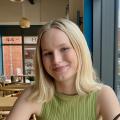
One of the most popular museums in the UK is coming to Thames Valley Science Park (TVSP) along with 27 million of its impressive artefacts.
The Natural History Museum will set up a science and digitalisation centre after approval for an extension to the park was approved by Wokingham Borough Council.
The University of Reading, which owns and runs TVSP, said that the £180m centre would bring ‘significant opportunities’ for academics and students.
The site will be extended along Spine Road to provide access to the new building.
The Natural History Museum, in London, will move some 27 million of its specimens in Reading – around a third of its overall collection. This will include mammal collections and non-insect invertebrates, such as corals molluscs and worms. It comes as the biggest move for the museum since the 1880s.
Museum officials have said that the new space will allow for ‘greater international collaboration, big data generation, and deeper investigations into the natural world’.
The Natural History Museum covers 4.6 billion years of the planet’s history with some 80 million items in its collection.
Dr Doug Gurr, director of the museum, said: “The university of Reading has a world-class reputation for teaching and research and there is enormous scope for collaboration on shared areas of scientific specialisms.”
However, another application for the construction of the building by the Natural History Museum awaits approval.
The plans for the Natural History Museum were first announced in 2022 are expected to be complete by 2026.
TVSP was selected as a suitable site for the museum ‘due to it’s proximity to London, being well connected to the motorway and Heathrow and the connection with the University’.
The plans signify a departure from Wokingham’s local plan, due to the park’s location in the countryside.
In a planning committee report in March, council officers argued that despite the countryside location, the ‘economic, social and environmental benefits’ delivered with the new site are considered ‘acceptable and necessary’.
This comes as the latest in the ambitions for the site, which will also house similar collections from the British Museum.
Located to the southwest of TVSP, phase one of the British Museum’s facility has been delivered. Outline planning permission has also been granted to deliver another phase to the south of where the Natural History Museum will be based.
It also recently welcomed Shinfield Studios, which opened in June to become the UK’s largest new TV and film studios.



Comments: Our rules
We want our comments to be a lively and valuable part of our community - a place where readers can debate and engage with the most important local issues. The ability to comment on our stories is a privilege, not a right, however, and that privilege may be withdrawn if it is abused or misused.
Please report any comments that break our rules.
Read the rules hereLast Updated:
Report this comment Cancel